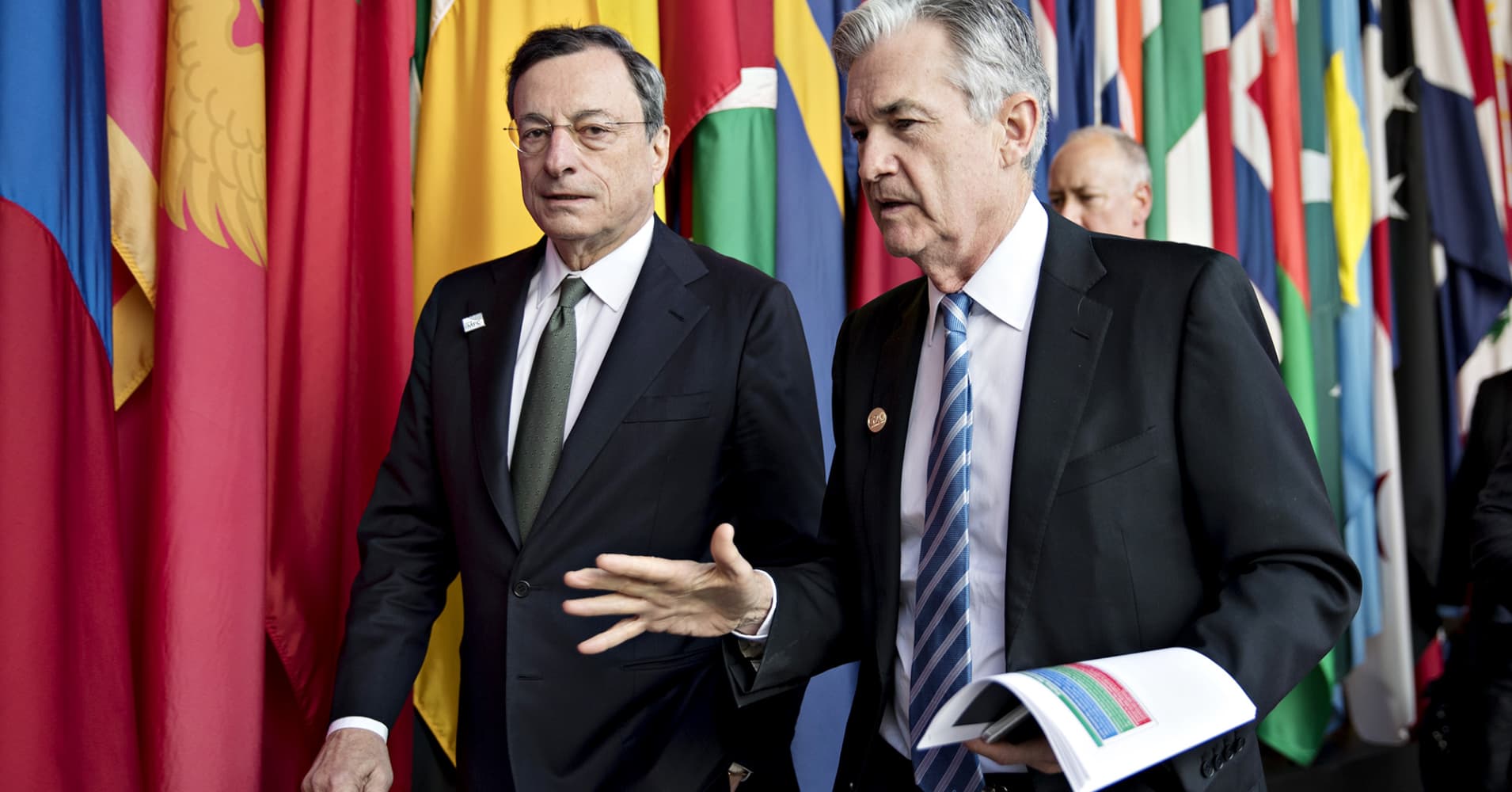
The Fed built up $4.5 trillion in bonds and other securities during its quantitative easing program which began nearly a decade ago.The dual approach of hiking rates while reducing asset holdings tightens monetary conditions at a faster pace than a change to the fed funds rate alone.
Next month, the Fed will increase its reductions to $50 billion a month — five times the pace this time last year. Separately two other major central banks are also pulling back on cheap money stimulus.
European Central Bank president Mario Draghi said earlier this year that its bond-buying quantitative easing program would end in December. However, he did pledge to keep interest rates low until at least mid-2019. The Bank of Japan, meanwhile, has tapered its purchase of long-term bonds but also intends to keep rates low.
“What worries me going into next year is that it’s not just the Fed,” added Boockvar. “The ECB is ending QE by year end… and then you add on what the Bank of Japan is doing,” said Boockvar. “The monetary spigot really changes a lot next year.”
Fiscal policy from the Trump White House may not have the same effect in offsetting the Fed’s monetary policy going forward, either, Boockvar cautioned.
“Next year you start to lose the one-time step-up to earnings from the tax cut and…the monetary tightening begins to pick up steam,” he said.
The GOP’s corporate tax cuts, which passed late last year, have raised companies’ earnings by a wide margin this year. That one-time boost created easy comparables that made profit growth appear even more impressive this year. S&P 500 earnings are expected to increase 22 percent this year, according to FactSet, nearly double the rate in 2017.
Be the first to comment